Veterinary Pathology
Online Resource for Unique Veterinary Pathology Lesions
Neonatal Hypothermia in Lambs (Gross Postmortem Lesions)
1) Introduction
- In forensic medicine and pathology, cases of hypothermia often pose a special challenge to experts because of their complex nature and the often absent or nonspecific nature of morphological findings.
- Death from hypothermia is difficult to verify, because there are no diagnostic necropsy findings. Anatomic lesions associated with hypothermia are variable and nonspecific.
- Establishing hypothermia as the cause of death requires a proper history of exposure and the absence of any other clear-cut lethal factor.
- The environment of the neonate can have a profound effect on its survival. This is especially true for lambs and piglets, in which hypothermia and hypoglycemia are common causes of death.
- Lambs are very susceptible to cold and hypothermia is an important cause of mortality in the early postnatal period. The risk for mortality from hypothermia is highest in lambs of small birth size.
- Lambs are particularly susceptible to cold stress during the first 5 days of life. During this period hypothermia can result from heat loss in excess of summit metabolism or from depressed heat production caused by intra-partum hypoxia, immaturity and starvation.
- Hypothermia can also predispose to infectious disease and can adversely affect the response of neonates in coping with an exogenous endotoxin challenge. Endotoxin exposure of hypothermic neonates results in an even greater reduction in body temperature.
2) Causes
- Mismothering, failure to suck, starvation, exposure to cold, congenital diseases, underweight lambs etc.
3) Case History
- Lambs of age 1-3 days old with the history of sudden death during winter season. The cases were suspected for death due to improper neonatal care during winter season.
4) Gross Postmortem Findings
- External examination of carcasses revealed emaciation, stiffness and cold feeling of extremities. The carcasses were emaciated showing poor postnatal management.
- Important findings: Empty gastrointestinal tract, absence of pericardial/epicardial/perirenal fat, severe congestion of various visceral organs.
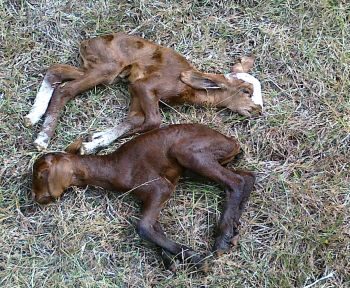 | 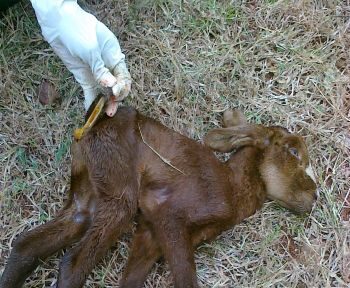 |
|
Fig.1: External examination of carcasses revealed emaciation, stiffness and cold feeling of extremities. | Fig.2: External examination of carcasses revealed emaciation, stiffness and cold feeling of extremities. |
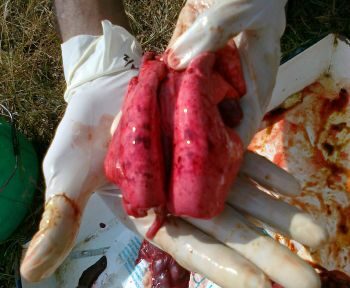 | 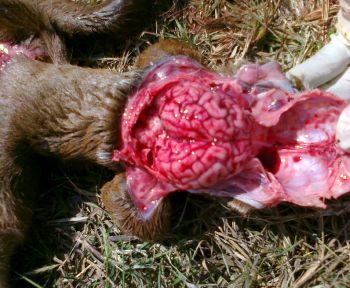 |
| Fig.3: Multiple petechiae on the lung surface. | Fig.4: Severe Congestion of brain. |
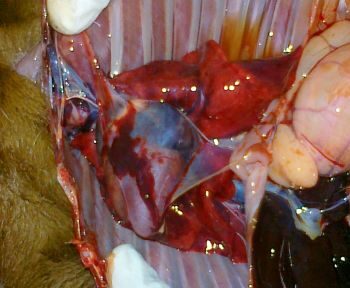 | 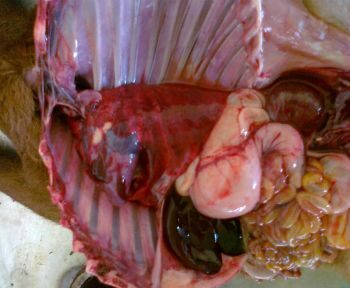 |
| Fig.5: Excessive pulmonary congestion, auricle filled with blood along with dilatation. | Fig.6: Excessive pulmonary congestion. |
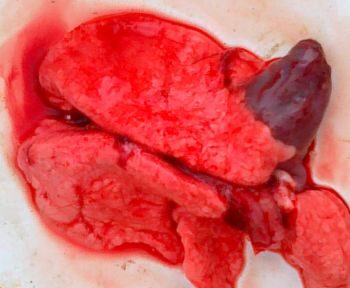 | 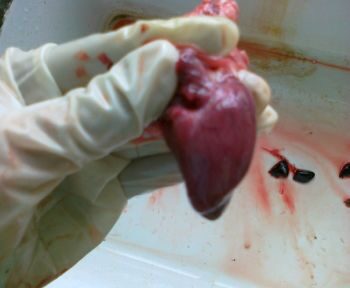 |
| Fig.7: Note excessive pulmonary congestion. | Fig.8: Note total absence of epicardial fat. |
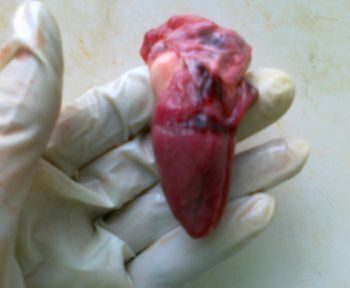 | 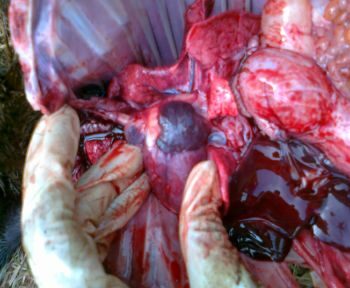 |
| Fig.9: Note total absence of epicardial fat. | Fig.10: Note Auricular dilatation. |
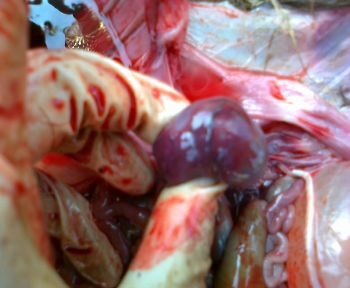 | 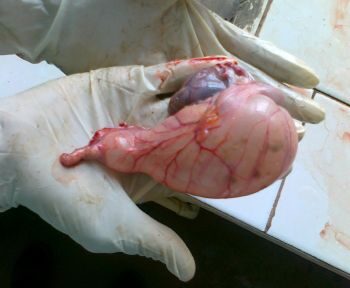 |
| Fig.11: Note total absence of perirenal fat. | Fig.12: Empty abomasum filled with gas indicating starvation. |
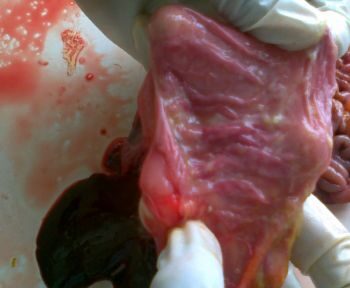 | 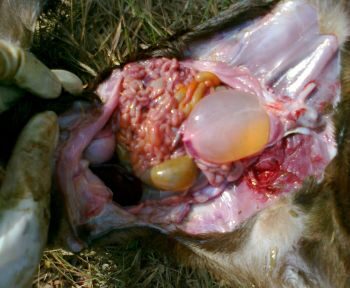 |
| Fig.13: Abomasal lumen showing presence of saliva/meconeum with no evidence of food indicating starvation. | Fig.14: Note dilation of urinary bladder. Almost in all cases dilation of urinary bladder observed. |
4) Pathophysiology of Neonatal Hypothermia
- Extremely low environmental temperature----> increased loss of heat from body----> Counter attack from hypothalamus to maintain temperature homeostasis via heat conservation & increased heat production.
- Heat Conservation achieved by peripheral vasoconstriction of blood vessels in skin and muscles-------> reduced blood supply to skin & muscles, reduced heat loss from skin and extremities------> reduced blood supply leads to stiffening of muscles and cooling of extremities especially limbs, neck, ears etc. may leads to necrosis of extremities/exposed tissue.
- The reduction in peripheral blood supply leads to increased blood volume around axis of body/vital organs/visceral organs leading to excessive congestion.
- Heat production is achieved by non-shivering thermogenesis in neonates-------> in this mechanism the heat is produced by metabolism of brown fat (localized in subcutaneous tissue, around kidney & adrenal, epicardial/pericardial fat)-----> leads to depletion of brown fat.
- As hypothermia progresses, there is a reduction in respiration and heart rate. Eventually, the hypothalamus loses the ability to regulate the body temperature. Cold narcosis develops and there is the abolishment of reflexes. When the core body temperature falls by more than 2°C, the animal’s coordination deteriorates. The physical functions are affected and the animal can lose consciousness. If the body temperature drops by more than 5°C it can produce cardiac arrhythmias and death.
- In severe cases, this muscle rigidity can inhibit breathing. Death from hypothermia is usually caused by cardiac arrest.
5) Case Discussion
- Although it’s very difficult to confirm the hypothermic death in animals due to lack of specific lesions, the correlation of case history, gross postmortem findings and pathophysiological aspects supports the neonatal hypothermia as a cause of death.
